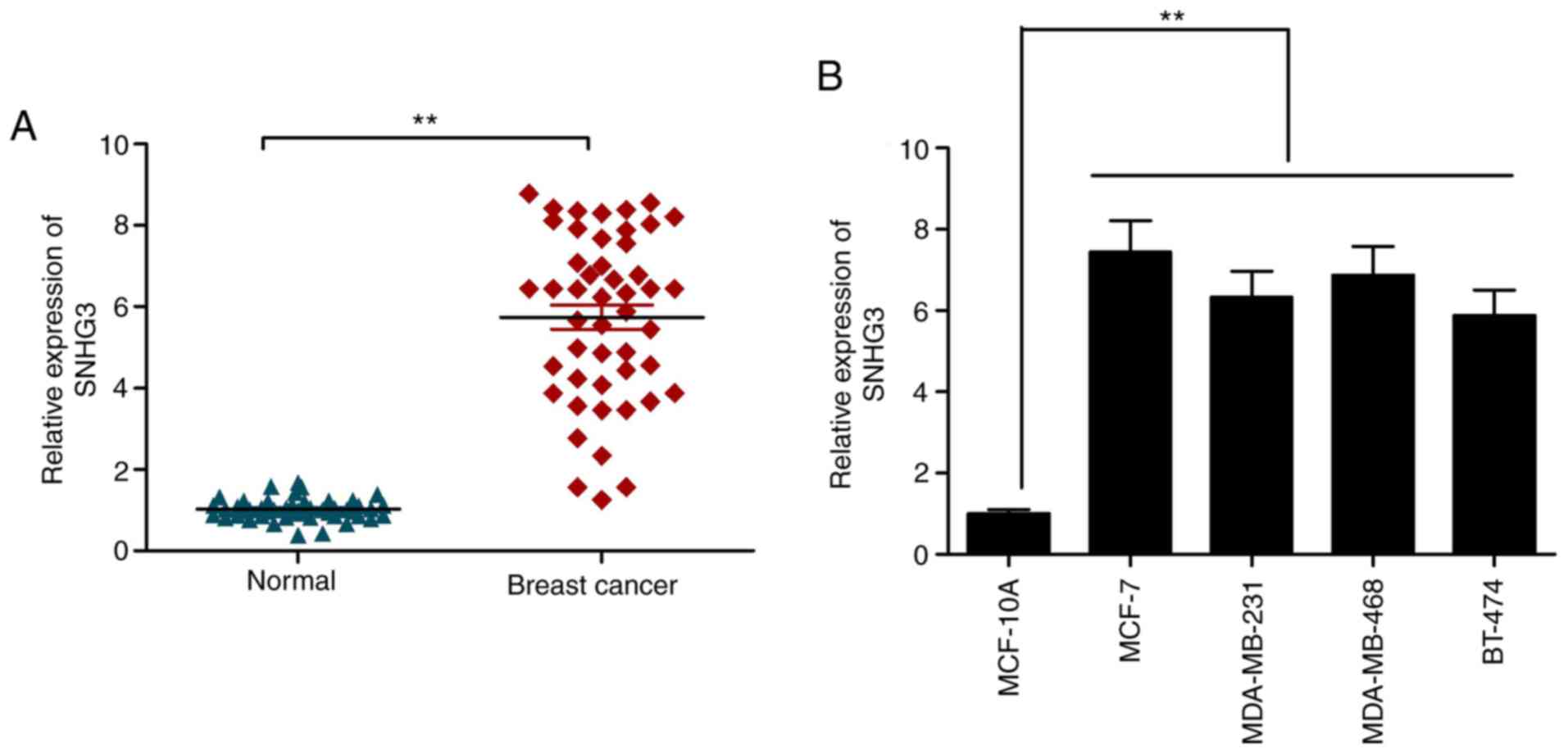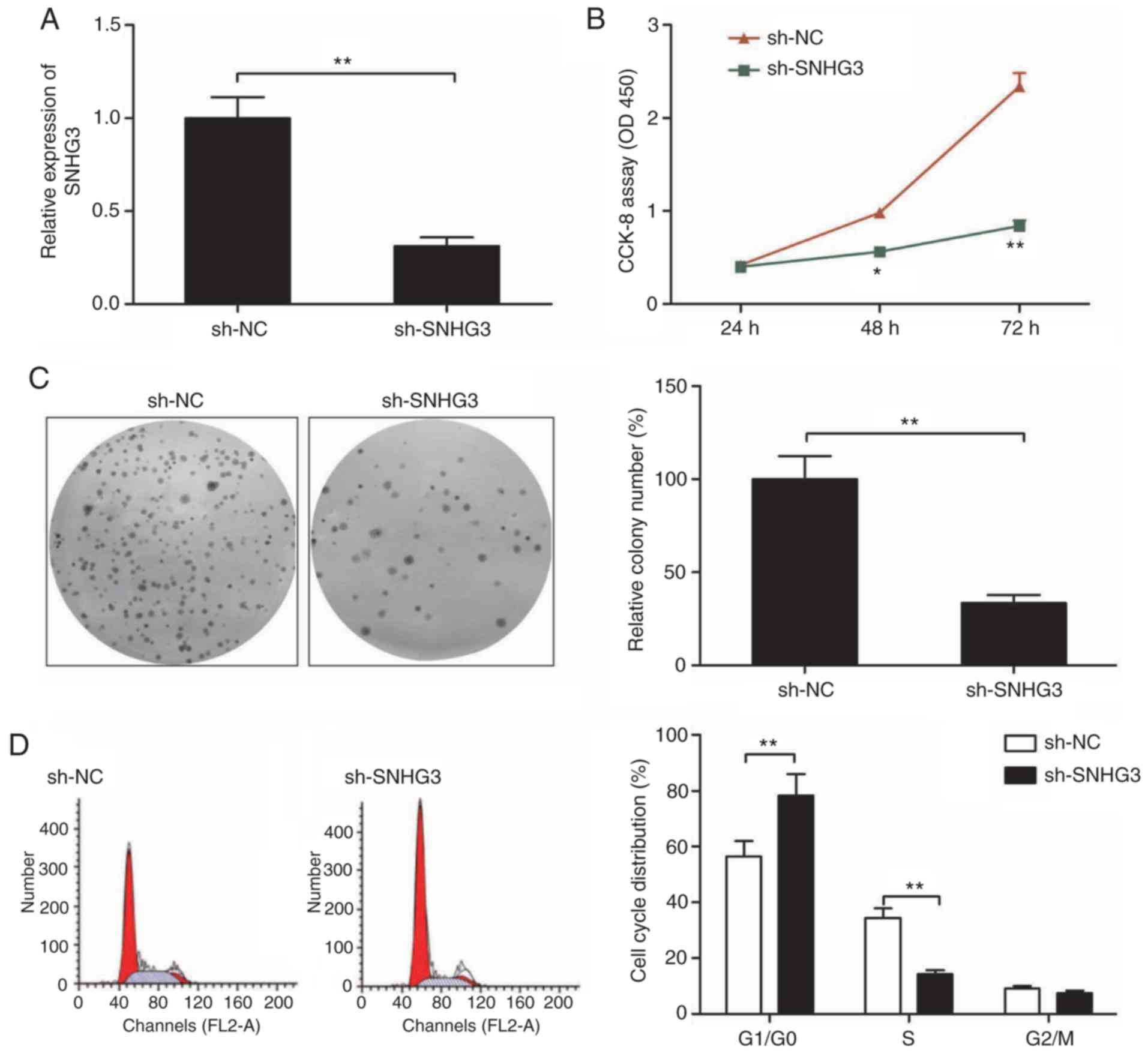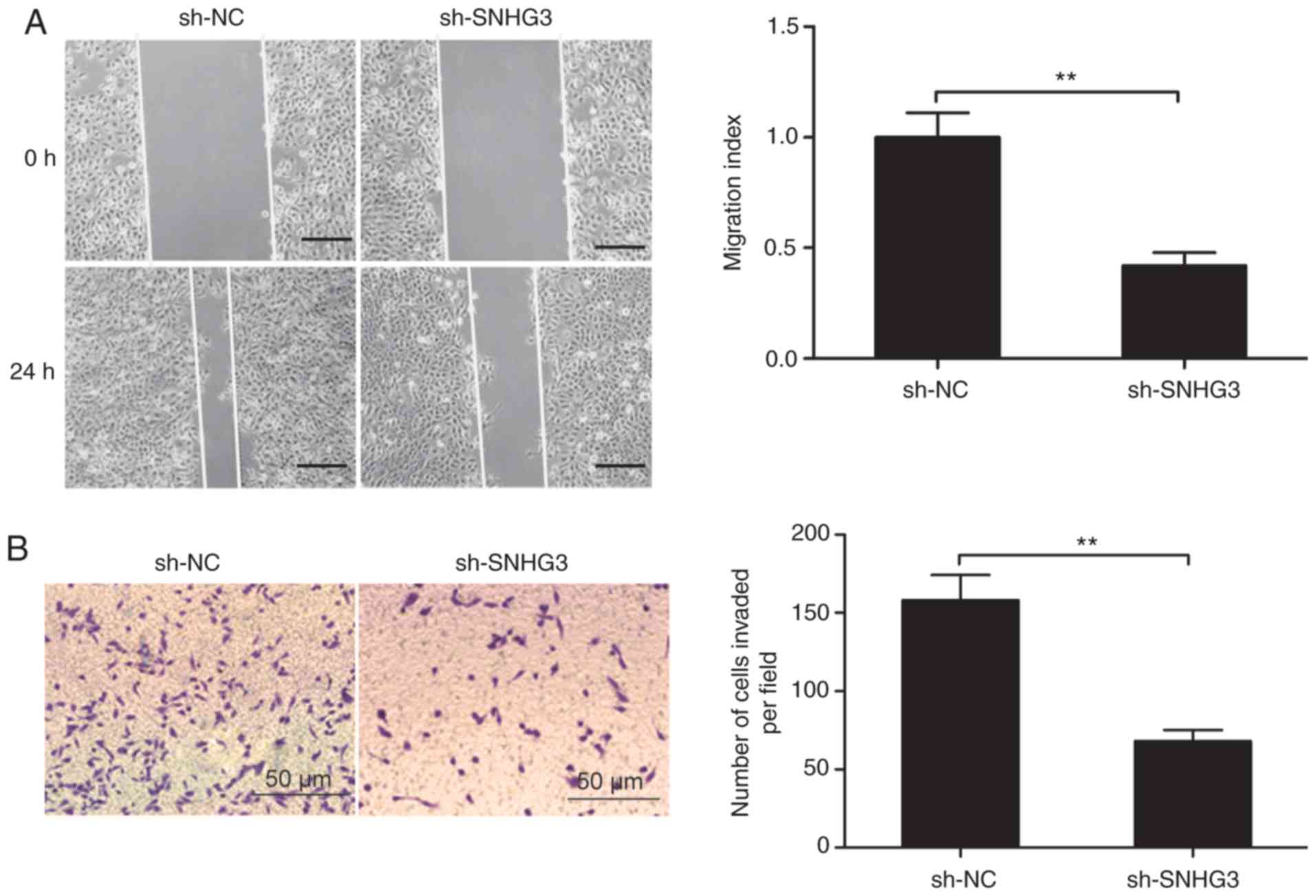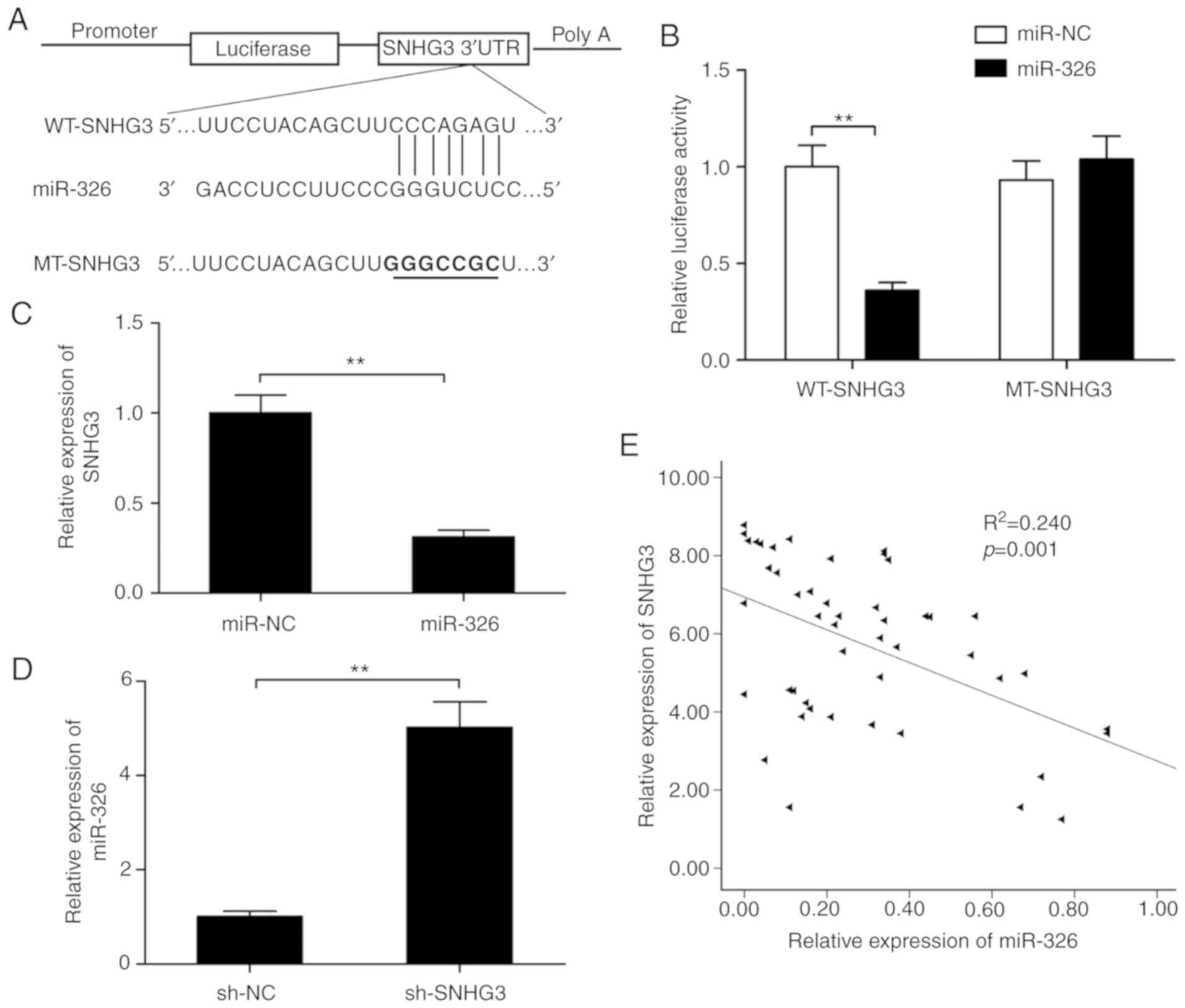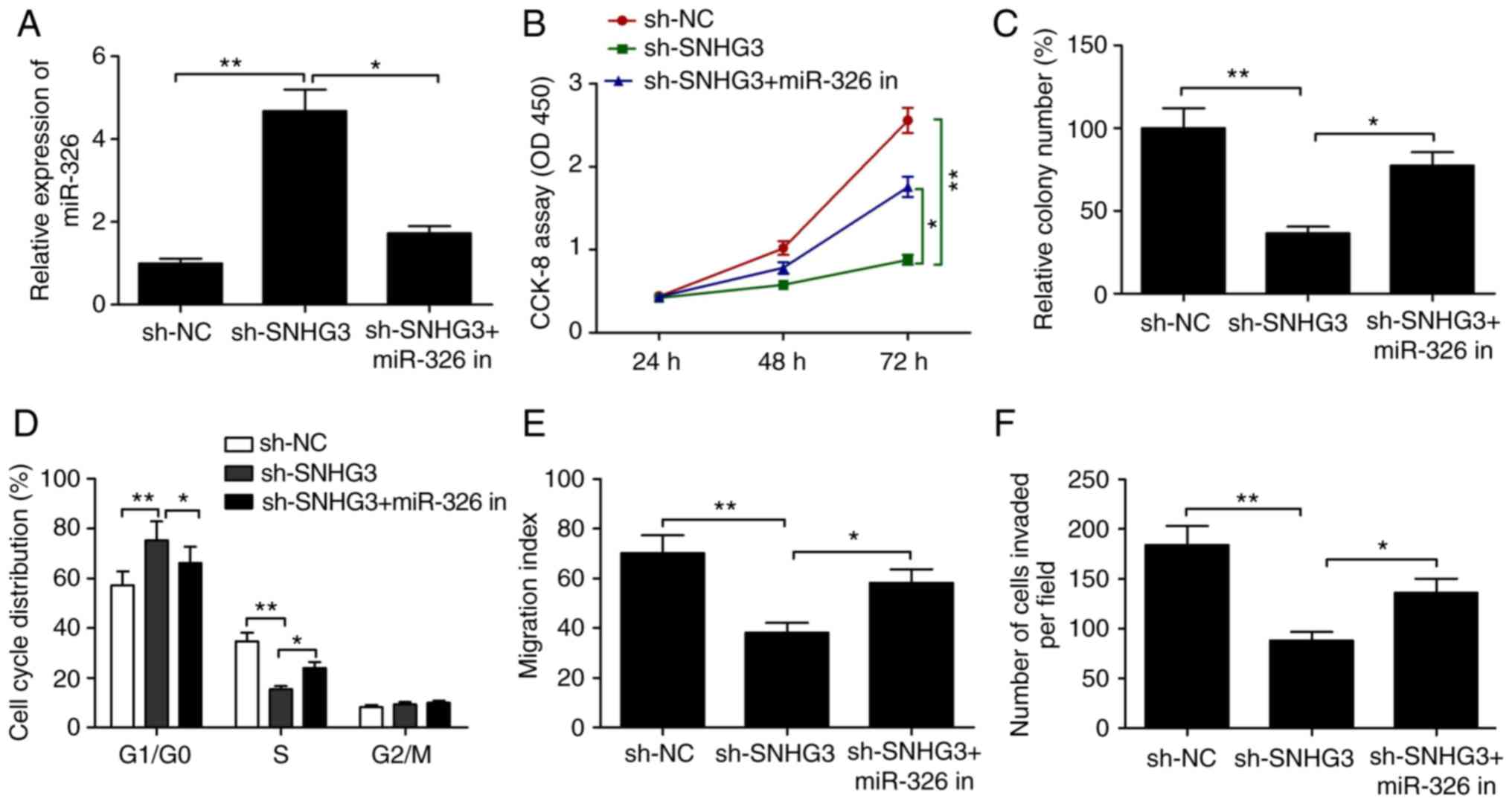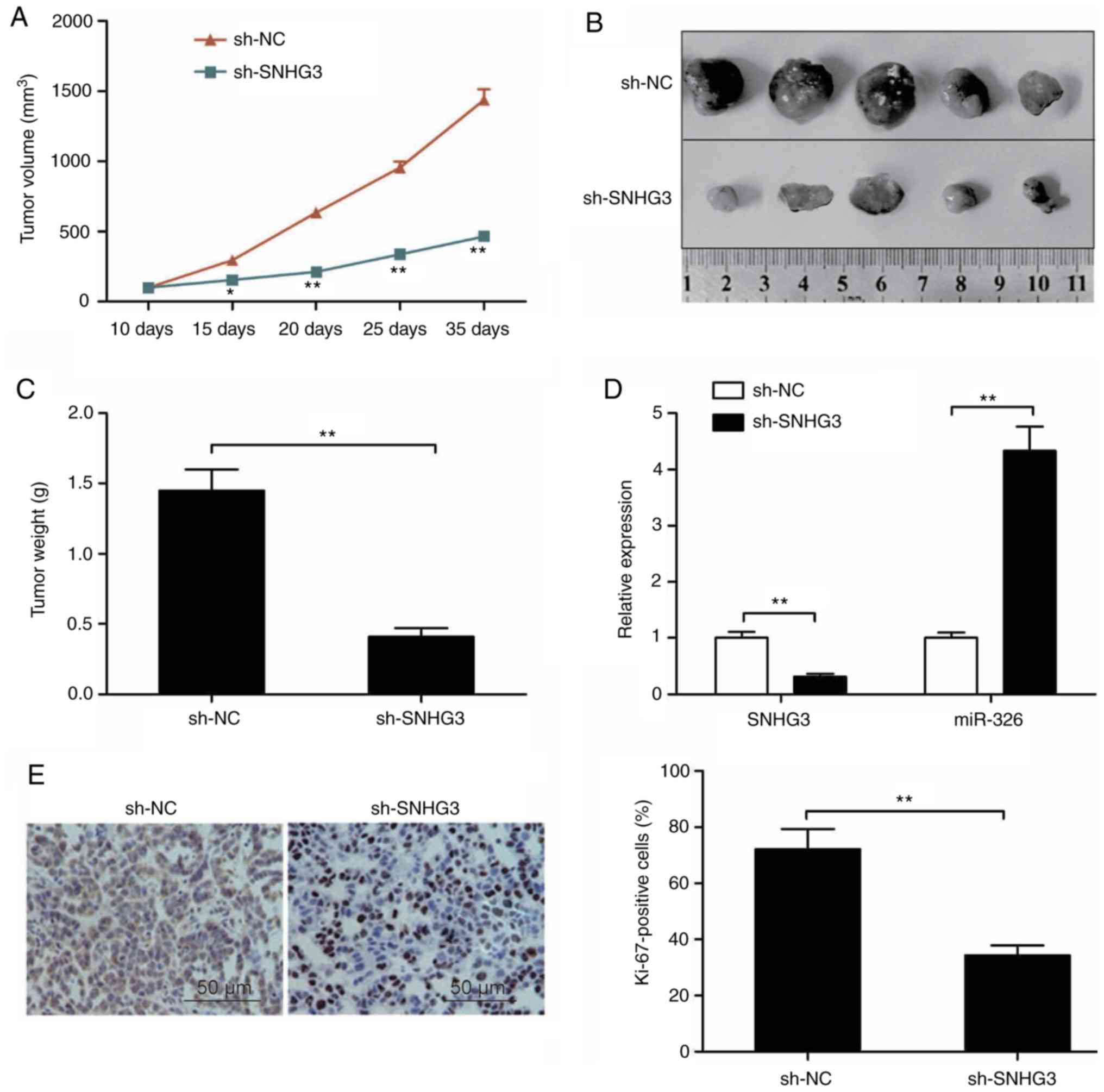|
1
|
Torre LA, Bray F, Siegel RL, Ferlay J,
Lortet-Tieulent J and Jemal A: Global cancer statistics, 2012. CA
Cancer J Clin. 65:87–108. 2015. View Article : Google Scholar : PubMed/NCBI
|
|
2
|
Fan L, Strasser-Weippl K, Li JJ, St Louis
J, Finkelstein DM, Yu KD, Chen WQ, Shao ZM and Goss PE: Breast
cancer in China. Lancet Oncol. 15:e279–e289. 2014. View Article : Google Scholar : PubMed/NCBI
|
|
3
|
Zhang T, Li J, He Y, Yang F, Hao Y, Jin W,
Wu J, Sun Z, Li Y, Chen Y, et al: A small molecule targeting
myoferlin exerts promising anti-tumor effects on breast cancer. Nat
Commun. 9:37262018. View Article : Google Scholar : PubMed/NCBI
|
|
4
|
Mercer TR, Dinger ME and Mattick JS: Long
non-coding RNAs: Insights into functions. Nat Rev Genet.
10:155–159. 2009. View
Article : Google Scholar : PubMed/NCBI
|
|
5
|
Ponting CP, Oliver PL and Reik W:
Evolution and functions of long noncoding RNAs. Cell. 136:629–641.
2009. View Article : Google Scholar : PubMed/NCBI
|
|
6
|
Bouckenheimer J, Assou S, Riquier S, Hou
C, Philippe N, Sansac C, Lavabre-Bertrand T, Commes T, Lemaître JM,
Boureux A and Vos JD: Long non-coding RNAs in human early embryonic
development and their potential in ART. Hum Reprod Update.
23:19–40. 2016. View Article : Google Scholar : PubMed/NCBI
|
|
7
|
Archer K, Broskova Z, Bayoumi AS, Teoh JP,
Davila A, Tang Y, Su H and Kim IM: Long non-coding RNAs as master
regulators in cardiovascular diseases. Int J Mol Sci.
16:23651–23667. 2015. View Article : Google Scholar : PubMed/NCBI
|
|
8
|
Heward JA and Lindsay MA: Long non-coding
RNAs in the regulation of the immune response. Trends Immunol.
35:408–419. 2014. View Article : Google Scholar : PubMed/NCBI
|
|
9
|
Fan Q, Yang L, Zhang X, Peng X, Wei S, Su
D, Zhai Z, Hua X and Li H: The emerging role of exosome-derived
non-coding RNAs in cancer biology. Cancer Lett. 414:107–115. 2018.
View Article : Google Scholar : PubMed/NCBI
|
|
10
|
Sun T: Long noncoding RNAs act as
regulators of autophagy in cancer. Pharmacol Res. 129:151–155.
2018. View Article : Google Scholar : PubMed/NCBI
|
|
11
|
Tian T, Wang M, Lin S, Guo Y, Dai Z, Liu
K, Yang P, Dai C, Zhu Y, Zheng Y, et al: The impact of lncRNA
dysregulation on clinicopathology and survival of breast cancer: A
systematic eeview and meta-analysis. Mol Ther Nucleic Acids.
12:359–369. 2018. View Article : Google Scholar : PubMed/NCBI
|
|
12
|
Cerk S, Schwarzenbacher D, Adiprasito JB,
Stotz M, Hutterer GC, Gerger A, Ling H, Calin GA and Pichler M:
Current status of long non-coding RNAs in human breast cancer. Int
J Mol Sci. 17:14852016. View Article : Google Scholar
|
|
13
|
Zhang Y, Wu J, Jing H, Huang G, Sun Z and
Xu S: Long noncoding RNA MEG3 inhibits breast cancer growth via
upregulating endoplasmic reticulum stress and activating NF-κB and
p53. J Cell Biochem. 120:6789–6797. 2019. View Article : Google Scholar : PubMed/NCBI
|
|
14
|
Qiao E, Chen D, Li Q, Feng W, Yu X, Zhang
X, Xia L, Jin J and Yang H: Long noncoding RNA TALNEC2 plays an
oncogenic role in breast cancer by binding to EZH2 to target
p57KIP2 and involving in p-p38 MAPK and NF-κB pathways. J Cell
Biochem. 120:3978–3988. 2019. View Article : Google Scholar : PubMed/NCBI
|
|
15
|
Kong X, Duan Y, Sang Y, Li Y, Zhang H,
Liang Y, Liu Y, Zhang N and Yang Q: LncRNA-CDC6 promotes breast
cancer progression and function as ceRNA to target CDC6 by sponging
microRNA-215. J Cell Physiol. 234:9105–9117. 2018. View Article : Google Scholar : PubMed/NCBI
|
|
16
|
Liu L, Ni J and He X: Upregulation of the
long noncoding RNA SNHG3 promotes lung adenocarcinoma
proliferation. Dis Markers. 2018:57367162018. View Article : Google Scholar : PubMed/NCBI
|
|
17
|
Huang W, Tian Y, Dong S, Cha Y, Li J, Guo
X and Yuan X: The long non-coding RNA SNHG3 functions as a
competing endogenous RNA to promote malignant development of
colorectal cancer. Oncol Rep. 38:1402–1410. 2017. View Article : Google Scholar : PubMed/NCBI
|
|
18
|
Zhang PF, Wang F, Wu J, Wu Y, Huang W, Liu
D, Huang XY, Zhang XM and Ke AW: LncRNA SNHG3 induces EMT and
sorafenib resistance by modulating the miR-128/CD151 pathway in
hepatocellular carcinoma. J Cell Physiol. 234:2788–2794. 2019.
View Article : Google Scholar : PubMed/NCBI
|
|
19
|
Hong L, Chen W, Wu D and Wang Y:
Upregulation of SNHG3 expression associated with poor prognosis and
enhances malignant progression of ovarian cancer. Cancer Biomark.
22:367–374. 2018. View Article : Google Scholar : PubMed/NCBI
|
|
20
|
Fei F, He Y, He S, He Z, Wang Y, Wu G and
Li M: lncRNA SNHG3 enhances the malignant progress of glioma
through silencing KLF2 and p21. Biosci Rep. 38:BSR201804202018.
View Article : Google Scholar : PubMed/NCBI
|
|
21
|
Ma Q, Qi X, Lin X, Li L, Chen L and Hu W:
LncRNA SNHG3 promotes cell proliferation and invasion through the
miR-384/hepatoma-derived growth factor axis in breast cancer. Hum
Cell. 33:232–242. 2020. View Article : Google Scholar : PubMed/NCBI
|
|
22
|
Liang X, Li Z, Men Q, Li Y, Li H and Chong
T: Mir-326 functions as a tumor suppressor in human prostatic
carcinoma by targeting mucin1. Biomed Pharmacother. 108:574–583.
2018. View Article : Google Scholar : PubMed/NCBI
|
|
23
|
Livak KJ and Schmittgen TD: Analysis of
relative gene expression data using real-time quantitative PCR and
the 2(-Delta Delta C(T)) method. Methods. 25:402–408. 2001.
View Article : Google Scholar : PubMed/NCBI
|
|
24
|
Zhuang W, Ge X, Yang S, Huang M, Zhuang W,
Chen P, Zhang X, Fu J, Qu J and Li B: Upregulation of lncRNA MEG3
promotes osteogenic differentiation of mesenchymal stem cells from
multiple myeloma patients by targeting BMP4 transcription. Stem
Cells. 33:1985–1997. 2015. View Article : Google Scholar : PubMed/NCBI
|
|
25
|
Salmena L, Poliseno L, Tay Y, Kats L and
Pandolfi PP: A ceRNA hypothesis: The rosetta stone of a hidden RNA
language? Cell. 146:353–358. 2011. View Article : Google Scholar : PubMed/NCBI
|
|
26
|
Chan JJ and Tay Y: Noncoding RNA: RNA
regulatory networks in cancer. Int J Mol Sci. 19:13102018.
View Article : Google Scholar
|
|
27
|
Wang L, Su K, Wu H, Li J and Song D:
LncRNA SNHG3 regulates laryngeal carcinoma proliferation and
migration by modulating the miR-384/WEE1 axis. Life Sci.
232:1165972019. View Article : Google Scholar : PubMed/NCBI
|
|
28
|
Sui G, Zhang B, Fei D, Wang H, Guo F and
Luo Q: The lncRNA SNHG3 accelerates papillary thyroid carcinoma
progression via the miR-214-3p/PSMD10 axis. J Cell Physiol.
11:295572020.
|
|
29
|
Wu J, Liu L, Jin H, Li Q, Wang S and Peng
B: LncSNHG3/miR-139-5p/BMI1 axis regulates proliferation,
migration, and invasion in hepatocellular carcinoma. Onco Targets
Ther. 12:6623–6638. 2019. View Article : Google Scholar : PubMed/NCBI
|
|
30
|
Wang J, Cao L, Wu J and Wang Q: Long
non-coding RNA SNHG1 regulates NOB1 expression by sponging miR-326
and promotes tumorigenesis in osteosarcoma. Int J Oncol. 52:77–88.
2018.PubMed/NCBI
|
|
31
|
Li Y, Gao Y, Xu Y, Ma H and Yang M:
Down-Regulation of miR-326 is associated with poor prognosis and
promotes growth and metastasis by targeting FSCN1 in gastric
cancer. Growth Factors. 33:267–274. 2015. View Article : Google Scholar : PubMed/NCBI
|
|
32
|
Liang Z, Wu H, Xia J, Li Y, Zhang Y, Huang
K, Wagar N, Yoon Y, Cho HT, Scala S and Shim H: Involvement of
miR-326 in chemotherapy resistance of breast cancer through
modulating expression of multidrug resistance-associated protein 1.
Biochem Pharmacol. 79:817–824. 2010. View Article : Google Scholar : PubMed/NCBI
|
|
33
|
Ghaemi Z, Soltani BM and Mowla SJ:
MicroRNA-326 functions as a tumor suppressor in breast cancer by
targeting ErbB/PI3K signaling pathway. Front Oncol. 9:6532019.
View Article : Google Scholar : PubMed/NCBI
|
|
34
|
Du Y, Shen L, Zhang W, Ding R, Li Q, Li S
and Zhang H: Functional analyses of microRNA-326 in breast cancer
development. Biosci Rep. 39:BSR201907872019. View Article : Google Scholar : PubMed/NCBI
|















